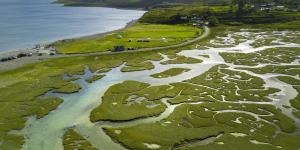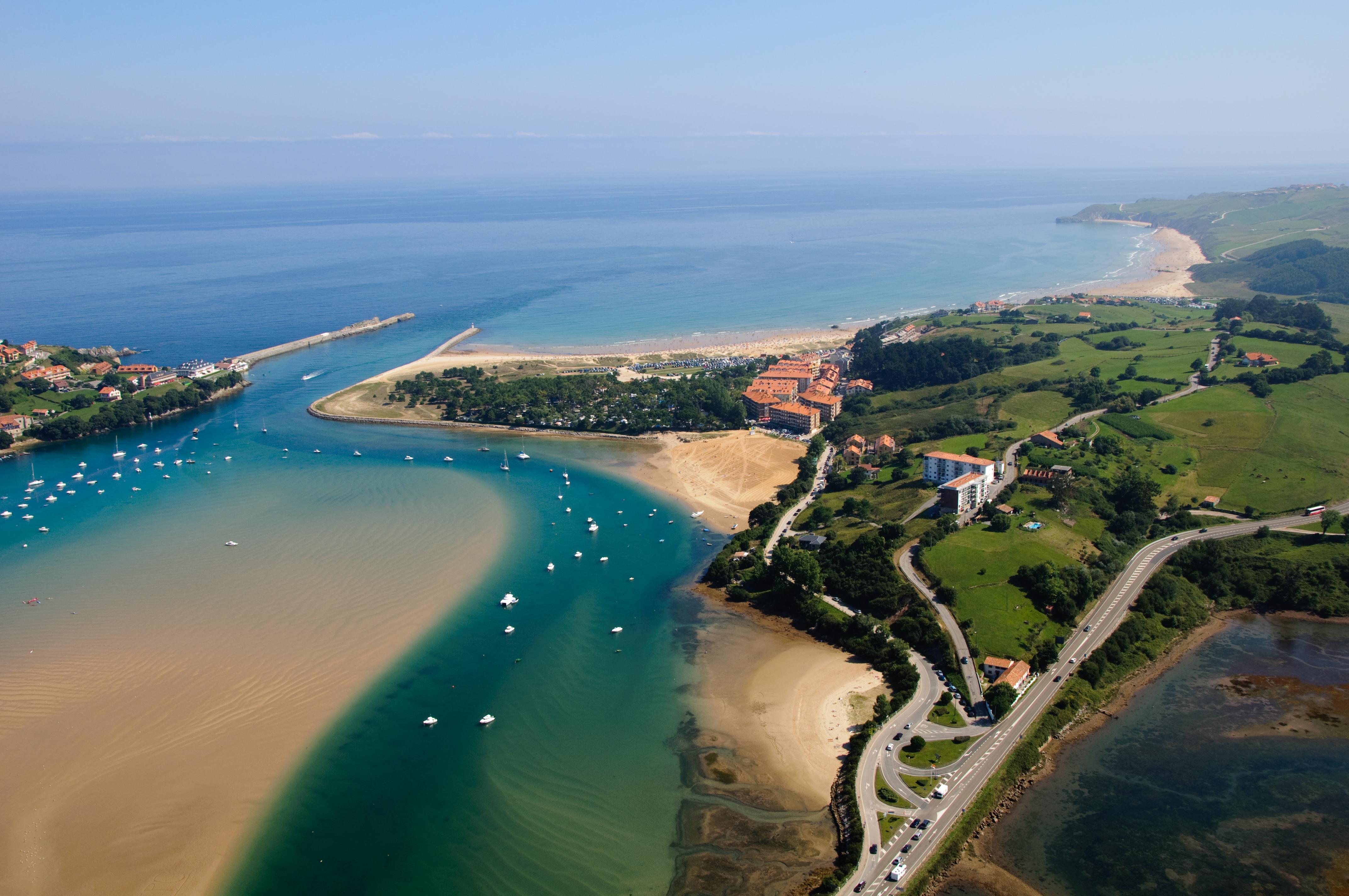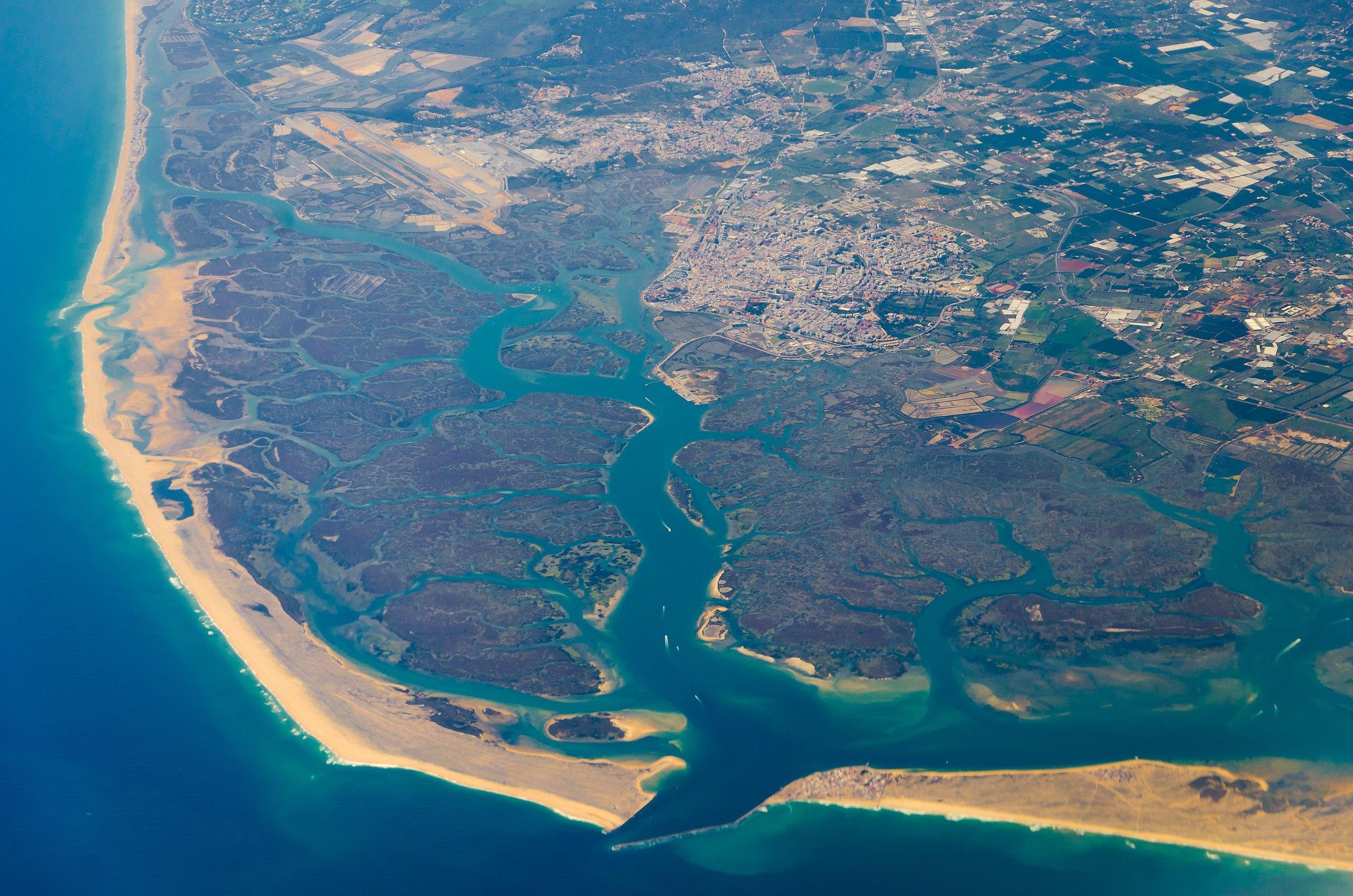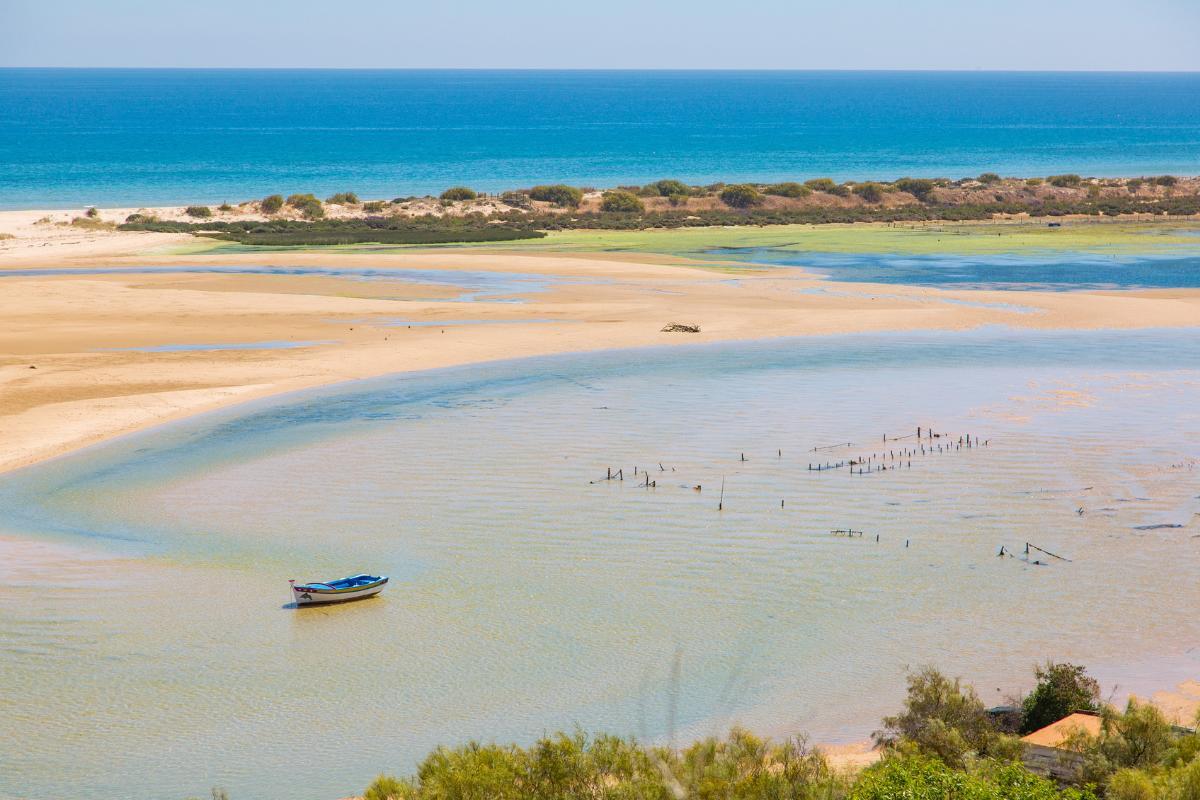What Is a Estuary? - Formation, Importance & Examples


Have you ever stood at the edge of a river, gazing out towards the vast ocean, and wondered what happens where the freshwater meets the salty sea? The answer lies in a fascinating and crucial coastal ecosystem: the estuary. These dynamic zones, where rivers and oceans collide, are a blend of freshwater and saltwater, teeming with life and playing a vital role in the health of our planet.
In the following article by thedailyECO, we explore what estuaries are, their characteristics, formation, and vital role in our planet's health.
What is an estuary?
An estuary is a partially enclosed coastal area where freshwater from rivers or streams mixes with saltwater from the ocean.
Freshwater entering the estuary mixes with the saltier ocean water, creating a brackish environment (water that's saltier than freshwater but less salty than ocean water). The salinity levels can vary depending on factors like freshwater flow, tides, and weather.
This brackish environment fosters a unique ecosystem that supports a variety of plant and animal life adapted to these varying salinity levels. Examples include fish species like salmon that migrate between freshwater and saltwater, or salt-resistant plants like mangroves.
Estuaries play a crucial role in the health of our planet. They act as nurseries for many fish species, filter pollutants from freshwater before it reaches the ocean, and protect coastlines from erosion. They're also economically important areas for fishing and recreation.
Our next article explores the diverse aquatic biomes that exist beyond estuaries, highlighting the unique ecosystems found on Earth.

How are estuaries formed step by step?
Estuaries can be formed by several geological processes, here are the two most common:
- Drowned river valleys: this is the most common way estuaries form. Over thousands of years, rising sea levels cause existing river valleys to be flooded by seawater. As the sea level rises, the saltwater pushes inland, filling the valley and creating a brackish environment.
- Barrier beaches and lagoons: in some cases, long stretches of sand or barrier islands develop parallel to the coastline. These barriers trap freshwater flowing from rivers, creating a lagoon behind them. Over time, this lagoon mixes with saltwater seeping through the barrier, forming an estuary.
In addition to these main processes, geological events like faulting or tectonic plate movement can also contribute to estuary formation by creating depressions that become filled with saltwater and freshwater.
The specific shape and size of an estuary depend on various factors like the rate of sea level rise, the strength of river currents, and the surrounding topography.

Difference between river and estuary
While both rivers and estuaries are vital parts of our planet's water system, they differ significantly in their characteristics and ecological roles. Let's delve into the key differences between these bodies of water.
Water type:
- Rivers: these are the lifeblood of freshwater ecosystems. They carry freshwater, originating from mountains, springs, or glaciers, all the way down to their outlets, which can be lakes or oceans.
- Estuaries: as mentioned earlier, estuaries are where freshwater from rivers meets the ocean, creating a unique brackish environment. The salinity (saltiness) of an estuary can vary depending on factors like freshwater flow, tides, and weather.
Formation:
- Rivers: rivers are formed by the continuous flow of water, typically downhill due to gravity. This flow accumulates from rain or melting snow, carving valleys and shaping landscapes over time.
- Estuaries: these coastal hotspots are born from the dynamic interplay of land and sea. Rising sea levels can flood existing river valleys, creating estuaries. Alternatively, barrier islands or stretches of sand along the coast can trap freshwater flowing from rivers, forming lagoons that eventually mix with saltwater, resulting in an estuary.
Ecosystems:
- Rivers: rivers support a vibrant array of freshwater species. Fish, amphibians, reptiles, and even semi-aquatic mammals like otters call these flowing ecosystems home.
- Estuaries: estuaries are hotspots for biodiversity due to their unique blend of freshwater and saltwater. Many fish species migrate through estuaries as part of their life cycle. Plant life thrives here too, with fascinating examples like salt-resistant mangroves that can tolerate varying salinity levels. Estuaries also serve as crucial nurseries for numerous fish and shellfish species.
Difference between estuary and fjord
While the formation stories differ, both estuaries and fjords represent a critical zone where freshwater and saltwater meet. Let's delve deeper and explore the key characteristics that differentiate these fascinating aquatic features.
Formation
- Estuaries: rising sea levels play a starring role in estuary formation. They inundate existing river valleys, creating a stage where freshwater and saltwater meet and mingle. In other cases, barrier islands or coastal sandbars become nature's architects, trapping freshwater flow and forming lagoons. Over time, these lagoons connect with the ocean, transforming them into brackish havens.
- Fjords: over millennia, colossal glaciers carve deep, U-shaped valleys into the Earth's crust. When the glaciers eventually retreat, seawater rushes in, filling these valleys and creating fjords. The signature steep cliffs and dramatic depth are a testament to the powerful forces that shaped them.
Water Type
- Estuaries: as mentioned earlier, freshwater from rivers continuously flows in, meeting the incoming saltwater from the ocean. This creates a dynamic environment with salinity levels that constantly fluctuate depending on factors like freshwater inflow, tides, and weather.
- Fjords: fjords are primarily filled with saltwater from the ocean. However, due to their unique shape and limited freshwater input, some fjords may experience a fascinating layering effect. Freshwater from rivers or melting glaciers might form a less dense upper layer, while denser saltwater from the ocean occupies the deeper regions.
Depth and shape
- Estuaries: estuaries tend to be shallower bodies of water with gently sloping floors and wider openings to the ocean. This allows for a greater influence of freshwater and the creation of vast wetlands and mudflats.
- Fjords: fjords are renowned for their dramatic landscapes. Steep cliffs plunge into deep basins, a consequence of the glacial sculpting that carved these valleys. The depth of a fjord can vary significantly, with some reaching astounding depths that rival even the open ocean.
Ecosystems
- Estuaries: as mentioned earlier, estuaries, with their unique blend of saltwater and freshwater, provide a vital habitat for a diverse range of species. They serve as crucial nurseries for fish and shellfish, offering abundant food and protection for developing young. Many fish species also use estuaries as migration corridors, journeying between freshwater and saltwater environments. The varying salinity levels also support a variety of plants, with salt-tolerant species like mangroves thriving in these dynamic coastal zones.
- Fjords: fjords support a variety of marine life, but the specific ecosystem depends on factors like depth, temperature, and oxygen levels. Sunlight penetration can be limited in deeper areas, impacting the types of organisms that can thrive. However, some fjords boast unique communities of fish, plankton, and marine mammals adapted to the colder and sometimes nutrient-rich waters.
If you want to read similar articles to What Is a Estuary? - Formation, Importance & Examples, we recommend you visit our Ecosystems category.
- Rosón, G., Cabanas, JM, & Pérez, FF (2008). “Hydrography and dynamics of the Ría de Vigo: an outcrop system.”







